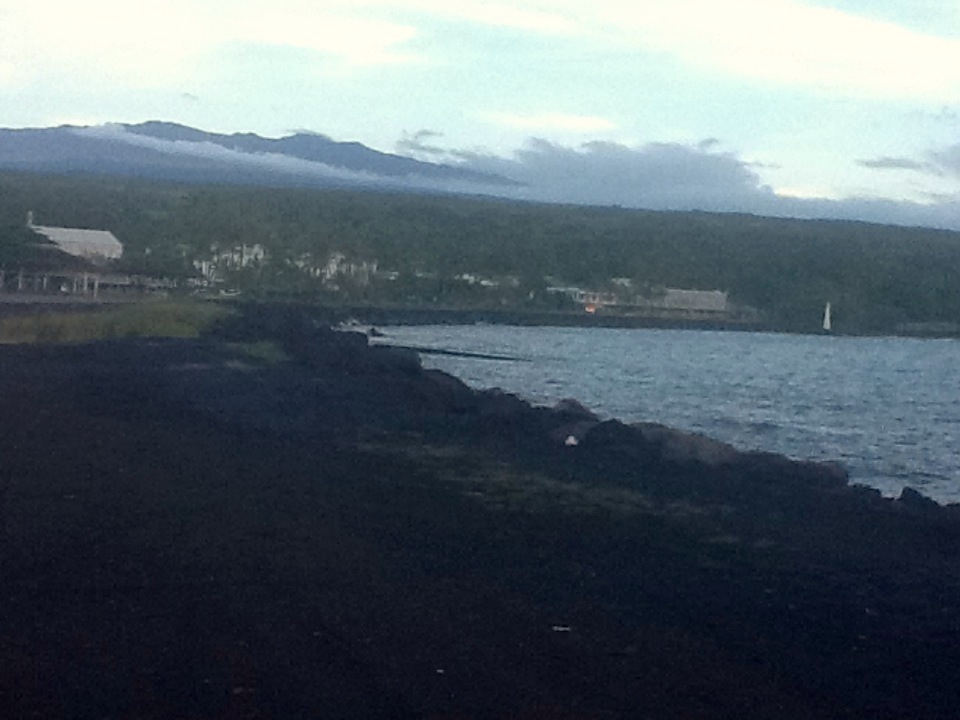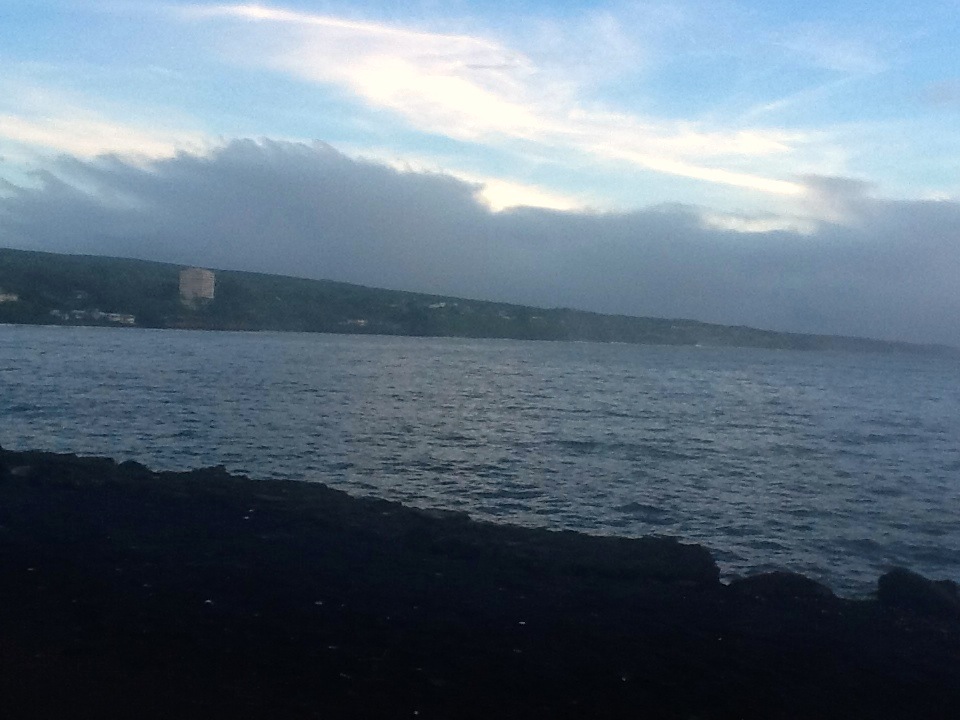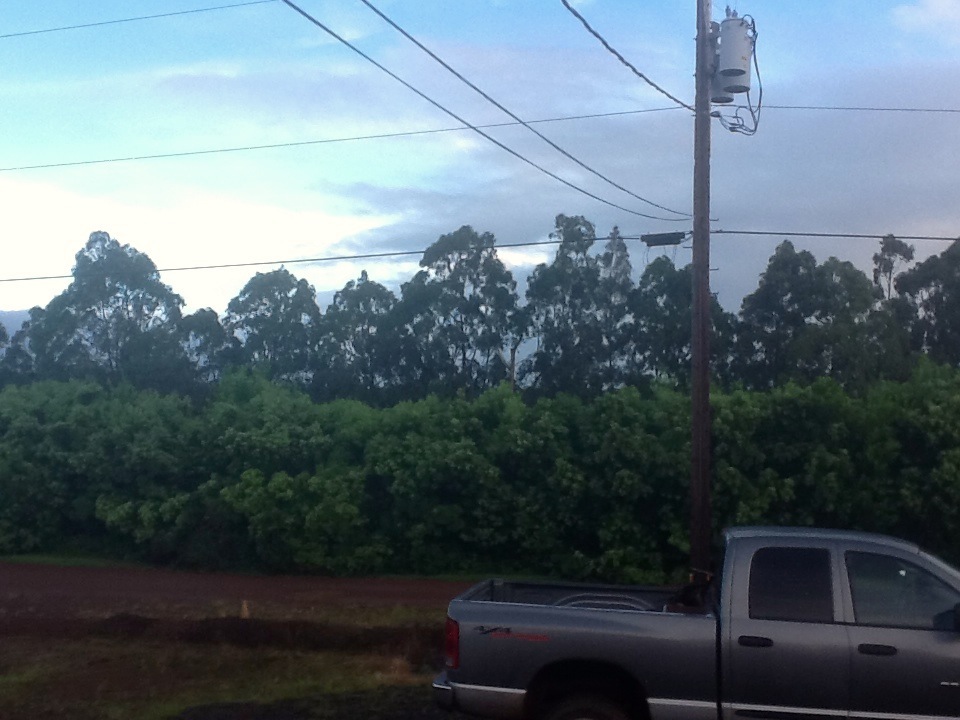Richard Ha writes:
We came away from Tropical Storm Flossie unscathed. We hope other farmers around the state were lucky, too.
I was up early this morning, and on my way to the farm I stopped by Hilo Bay to check out the storm. Last night they said it should arrive here around 6 a.m., and it sounded like it was going to be head on, coming straight at us.
We already know that 60 mph winds would take down our bananas, the ones in exposed places, and also our tomato houses. That’s why we planted our primary windbreaks to protect from north and south winds. They are serving that purpose well.
Because the sun moves across the sky somewhat to the south of directly overhead, we planted the windbreaks on the south sides of the roadways, so the shadows would fall on the road rather than on the plants. Farmers know that sun energy drives photosynthesis. Each leaf is a solar collector. But we must not restrict air movement too much, or fungus will thrive. There are lots of variables to consider.
So this morning around 6:00, I took these pictures at Hilo Bay.
I looked around and said, Holy smokes! The sun was coming up right behind me and I could see both mountains. I could see the top of Mauna Kea, and I could see the outline of Pepe‘ekeo point, clearly. That’s the point where the topography changes.
There was a north wind. The leading edge of the storm was blowing from the north. It wasn’t very strong, so I knew it was far away. Above the angry-looking clouds I could see blue sky, so it wasn’t very high and not very deep. That was significant.
Because we knew the storm was turning counter-clockwise, I predicted that as the storm went by it would increasingly be blocked by the slopes of Mauna Kea. As it kept moving and you could still see blue sky, sooner or later you would catch the back end of the storm where the wind starts blowing from the opposite direction. When it turned south, I thought, there did not appear to be much moisture-laden air to support heavy rainfall.
You could actually see it. I said early on that if this holds true to form, we should avoid the heavy rainfall we had expected. And that's how it turned out.
Farmers have to be able to do this sort of stuff. They’ve got to know how to watch the weather, and know how these things work, like planting windbreaks in the right places. We’ve seen what happens to plants that grow up against windbreaks. They don't grow as well without enough sun energy to support growth.
This morning we were at the farm, prepared for the worst-case scenario. We would have cut the ropes and let the plastic on our tomato houses fly,if necessary, instead of letting the wind twist the metal houses. Though if there was thunder and lightning, we wouldn’t have let our workers go out to do that. Worker safety comes first.
It’s very interesting to have seen it all happen and understood exactly what is going on.



